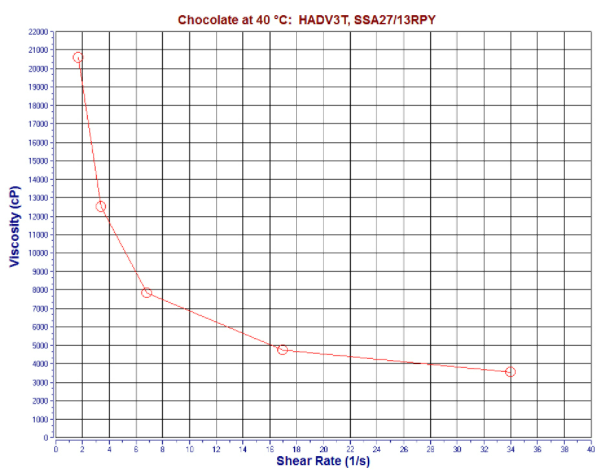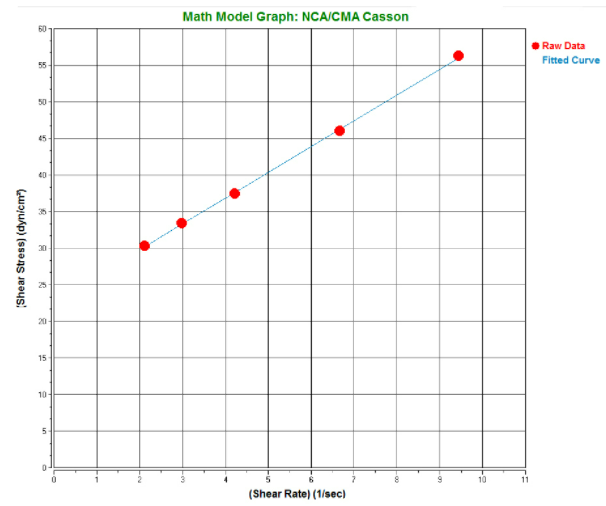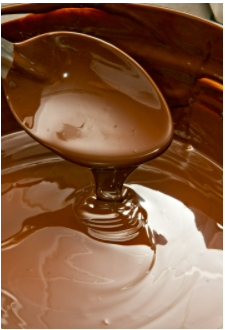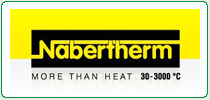USE
Chocolate is a tasty treat, frequently used in candies, icings, pastry fillings and numerous other desserts.
TEST EQUIPMENT
Instrument: Viscometer or Rheometer
Torque Range: HA
Spindle: SC4-27 Spindle with SC4-13RPY Sample Chamber
Accessories: Small Sample Adapter,
TC-550SD Programmable Temperature Bath
Speed: 5, 10, 20, 50 and 100 RPM
Temperature: 40°C
TEST METHOD
The Small Sample Adapter™ may be used with various Brookfield Viscometers or Rheometers. In our example, we used a Brookfield HADV3T, with RheocalcT™ software for automated instrument control and data acquisition. Our test temperature of 40°C was maintained by connecting the Small Sample Adapter™ water jacket to a Brookfield TC-550SD Programmable Refrigerated Bath. Representative data from the analyses are shown in Figures 1 and 2.
Figure 1 demonstrates that the viscosity of the dark chocolate decreased as the shear rate increased. This behavior is known as “shear- thinning”.

Figure 1: Dark Chocolate Viscosity at 40°C
Figure 2 illustrates a good fit of the NCA/CMA Casson model to the raw data. The “CoF”, the Confidence of Fit (%), of the raw data to the fitted curve, is nearly 100% signifying an excellent fit. As given in Figure 2, generated in RheocalcT™, the plastic viscosity is 1241 cP and the yield stress is 129 dyn/cm2. The chocolate was tested according to specifications provided by the National Confectioners Association and Chocolate Manufacturers Association.

Figure 2: NCA/CMA Casson Plot of Chocolate Rheology at 40°C
Some chocolates are tested at different shear rates, to ensure on-scale data. 1, 2.5, 5, 10, 20 and 50 RPM are appropriate in some cases, for example.
The Degrees MacMichael values may be calculated from Brookfield data at 20 RPM. This is discussed in our Article Reprint AR-79. The Torque, %, reading at 20 RPM, obtained by measuring chocolate with the HA spring torque range instrument using the SC4-27 spindle in the SC4-13R or SC4-13RP chamber, is multiplied by 3.40. The above example has a torque of 31.4% at 20 RPM – corresponding to a viscosity of 7850 cP at a shear rate of 6.8 s-1 or 6.8 1/s. Therefore, (31.4%)x(3.40) = 106.8 degrees MacMichael.
>>Download a pdf of this application.
Contact us : This email address is being protected from spambots. You need JavaScript enabled to view it.

















